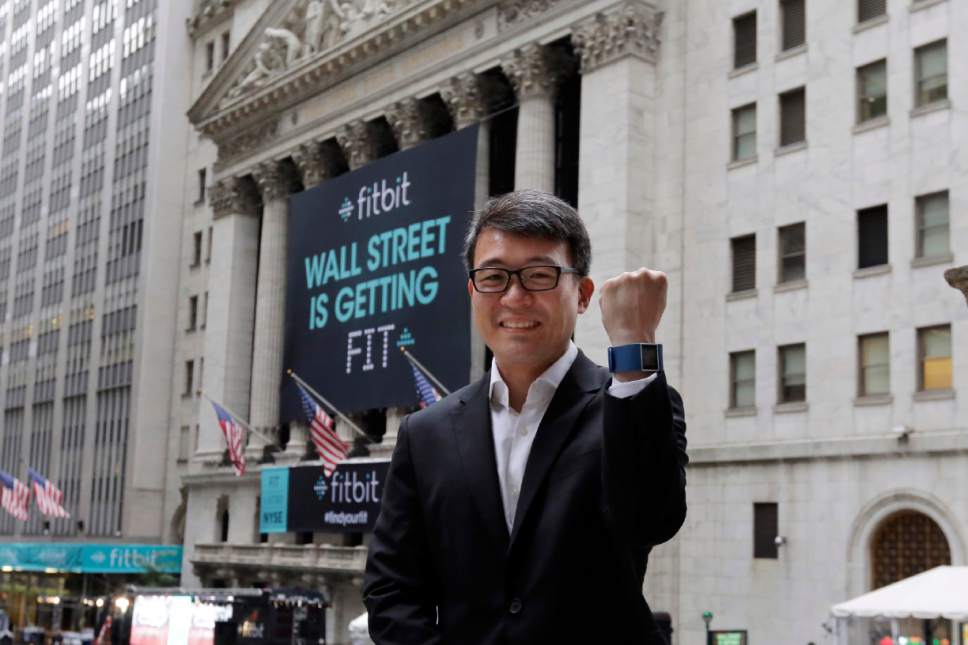- California Assembly OKs highest minimum wage in nation
- S. Korea unveils first graphic cigarette warnings
- US joins with South Korea, Japan in bid to deter North Korea
- LPGA golfer Chun In-gee finally back in action
- S. Korea won’t be top seed in final World Cup qualification round
- US men’s soccer misses 2nd straight Olympics
- US back on track in qualifying with 4-0 win over Guatemala
- High-intensity workout injuries spawn cottage industry
- CDC expands range of Zika mosquitoes into parts of Northeast
- Who knew? ‘The Walking Dead’ is helping families connect
How Fitbit CEO James Park became ’600 million dollar man’

Fitbit CEO James Park shows off one of his devices as he poses for photos outside the New York Stock Exchange, before his company’s IPO, Thursday, June 18, 2015. Fitbit makes devices that can be worn on the wrist or clipped to clothing to monitor daily steps, calories burned and grab other data. (AP Photo/Richard Drew)
By The Korea Times Los Angeles staff
Health wristband manufacturer Fitbit recently went public with its stocks and as the company’s value continued to rise, interest grew around its co-founder and CEO James Park, 39.
On Fitbit’s first day on the New York Stock Exchange (NYSE), the stock surged close to 50 percent raising the initial price offering from $20 to just under $30. This led the company’s main shareholder, James Park, to personally reach a market capitalization of $600 million.
James Park, who once obsessed over video games, dropped out from Harvard where he studied computer engineering. However he had developed a business-savvy attitude coupled with an eye for design.
James Park’s path to success is similar to that of others that came before him in the tech world. After dropping out of college, he prepared to establish an early venture. But he made sure to do it carefully as many startups are built to fail.
Early on, he believed that products with motion sensing capabilities were going to play a significant role in the future of consumer technology. He teamed up with co-founder Eric Friedman in 2007 to secure $400,000 and soon afterwards Fitbit was born.
When Park and Friedman first met with potential investors, all they had was a circuit board and a wooden box. Funding and manufacturing were the two main obstacles the newly established company had to face.
In 2011, Fitbit saw its mainstream presence grow through word-of-mouth, as more and more users began routinely recording daily logs of physical activity.
In order to teach consumers about this new and somewhat-foreign technology, the company utilized aggressive marketing tactics in order to showcase its products.
It wasn’t all skipping and yellow-brick roads on the way to success though.
Fitbit saw annual deficits of $400,000 and $52 million in 2012 and 2013, respectively, but in 2014, surplus reached $132 million.
Park spent $112 million of that on marketing with little hesitation.
As proof of its ongoing innovative approach to combine style, fitness and technology, Fitbit recently partnered with luxury brand Tory Burch to launch a line of fashionable bracelets to draw in a new demographic.















